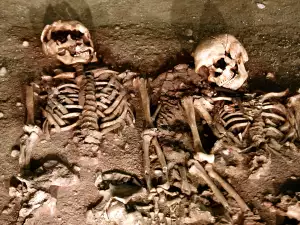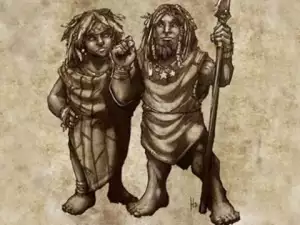Archaeologists have uncovered the extravagant grave of an ancient Scythian king that ruled the steppes of South Russia more than 2500 years ago during excavations in the Altai Mountains, which were considered holy by the horse riding people, writes the Daily Mail.
The ruler was buried along with his horse and vast riches for his time. Near the bodily remains, archaeologists found several different types of metal. Besides gold, the grave also held a valuable Scythian sword, chunks of raw iron, a chisel, ritual knife and an altar made from 3 types of metal.
Even though the material, from which the clothing of the Scythian king was fashioned, has long since rotted away, we can infer that it was exceptionally luxuriant.
"While we were studying the grave, we kept finding gold flakes, which were used to decorate the clothing, " tells prof. Alexander Kazakov. He is the lead archaeologist and head of the scientific research department at the Barnaul Law Institute of the Russian Interior Ministry.
As we know, the Scythians were a nomadic people that ruled the territory of central Eurasia. Their lands stretched from what is now Iran and China to Romania and Belarus.
Ancient Greek and Chinese chronicles described them as fierce warriors, who wrought fear with their blood thirst and skill in combat.
During the 7th century BC, the Scythians founded a far-reaching kingdom, defeating every foe with the aid of their short bows, Scythian swords and unbelievable horse warfare tactics. During the 5th century BC, the Scythians had established highly profitable trade with Greece and the ruling elite amassed untold riches. They became famous for their love of expensive gold jewelry.
The grave was discovered on the outskirts of the village Krasny Yar in Altai, located on the territory of South Russia. Archaeologists estimate that it is from the year 500 BC.
The mound which had been covering it was nearly destroyed after centuries of agricultural activity in the region. Even so, prof. Kazakov explained that the grave managed to survive thanks to the stone sarcophagus under the mound.
"The fact that the ruler was buried with his horse reveals how highly revered the proud animals were in Scythian culture, " tells Kazakov, also adding that the scientists have extremely rarely come across such opulent Scythian burials so far.
He believes that the find will provide priceless information about the nomadic culture of the Scythians, who are known to history primarily through foreign chronicles and through the works of their master craftsmen.









